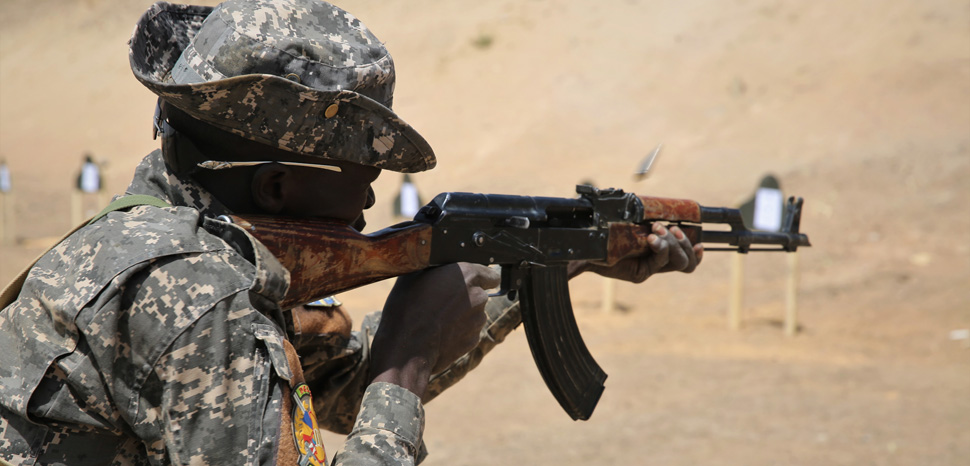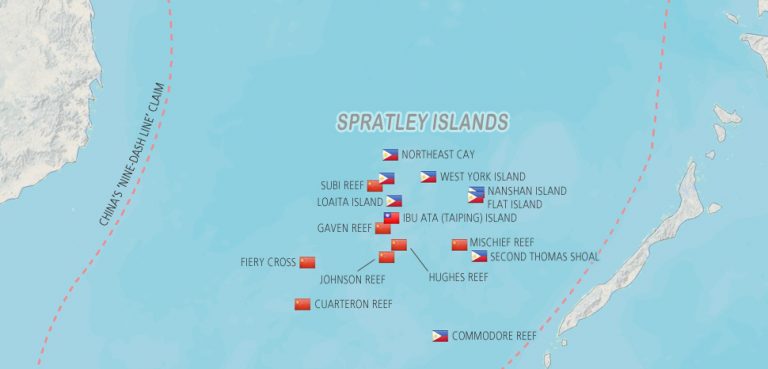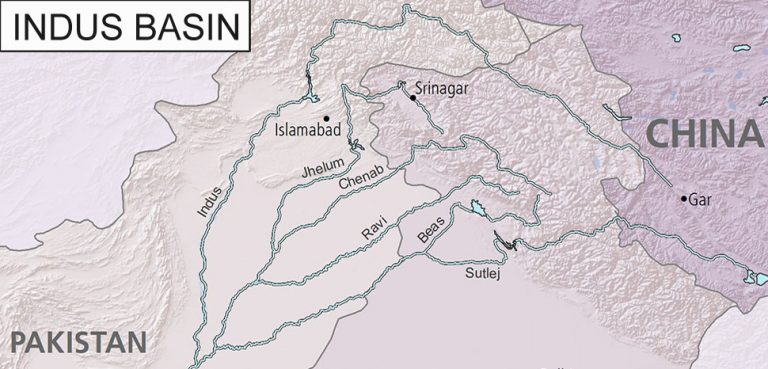Summary
A large, land-locked African country around twice the size of Texas, Chad currently stands at the confluence of several environmental, economic, health, political, and military disasters. Their combined effect is to strain already delicate state institutions to the breaking point, heaping additional hardship on not only the long-suffering 15 million people who live there, but also populations in neighboring countries, as many of these crises are trans-national in nature.
Recent examples abound of how the associate risks of state collapse metastasize outward from the affected state. Chad is no exception, and what may seem like a national problem in Central Africa today is a regional one tomorrow, and Europe’s next week.
Background
Chad is grappling with a number of crises, the effects of which are frequently mutually reinforcing.
A relatively recent one is the COVID-19 pandemic, which has produced associated economic and health costs that are regrettably all-too-familiar around the world. The official numbers – 1,203 confirmed cases through September 30 – are benign on the surface, but one must bear in mind that these are confirmed cases, and the vast majority of Chadians don’t have access to sufficient healthcare (or testing). The real number can be expected to be exponentially higher, and inferential models predict that hospital capacity has already been exceeded.
Environmental risks
The country is also experiencing severe environmental disasters which are exacerbated by global warming. An abnormally wet rainy season has unleashed rampant flooding in the central and southern provinces, affecting an estimated 388,000 people. The over 34,800 hectares of crops destroyed by the flooding portends a coming food crisis in the months ahead. In fact, going by the World Food Programme (WFP) metrics, Chad’s humanitarian situation was already dire before this year’s flooding: in 2019 it had one of the highest levels of hunger in the world, with 66.2% of its population below the severe poverty line. In terms of human development metrics, it ranks among the worst countries in the world.
The environmental risks don’t end at flooding, reflected in the fact that Chad is ranked the world’s most at-risk country in a Verisk Analytics climate vulnerability index. In the years ahead, Chad is projected to become arid at a significantly higher rate than the global average. The result will be lower yields and less land available for pasture in a country where 80% of the population is engaged in sustenance and pastoral agriculture. As growing numbers of people lose their livelihood or are forcibly displaced, the risk of sectarian conflict will increase in turn.
For a sobering graphic illustration of the challenge that climate change represents for Chad, look no further than the dramatic decline of Lake Chad since 1963. Specifically, the recent history of the Lake Chad Basin is a cautionary tale of how environmental degradation is so often the first step in an extended process of radicalization and, ultimately, sectarian violence.
Economic risks
Chad’s economy is reeling from two negative macroeconomic trends. The first is the COVID-19 pandemic, which like elsewhere in the world has severely disrupted the tempo of everyday commerce across a wide band of sectors, with tourism and hospitality hit the hardest. The economic impact of COVID-19 has been compounded by declines in the price of oil – Chad’s primary export (producing around 128,000 barrels per day).
The second negative trend is an associated decline in Chad’s terms of trade: the country’s outlook went from projections of modest growth (3%) in 2020 to a projected contraction, and the current account deficit has doubled to around 13% of GDP, prompting calls for increased emergency funding from the IMF. Chad was already receiving IMF emergency funding before COVID-19 hit.
The country’s debt outlook is also a source of risk. Chad has been flagged as high risk of debt distress by a joint IMF/World Bank debt sustainability analysis, and external debt accumulation has been particularly pronounced over the past year, growing from 24.6% of GDP in 2019 to 31.5% in 2020. It is expected to grow further to 34.4% by next year. Where it goes from there is a factor of the post-COVID global economic recovery; more specifically how it manifests in commodities like oil and gold – Chad’s top exports (86.5% and 8.9% of total exports in 2018 respectively).

Security risks
The population of Chad is split down the middle on religion, with 52.1% Muslim and 44% Christian, concentrated in the northern and southern areas of the country respectively. This religious distribution has informed much of Chad’s post-independence political and sectarian conflict, which has boiled over into full-fledged civil war on two different occasions (1965-79, and 2005-2010). The population is also extremely diverse in terms of ethnic groups, some of which include Sara, Mundang, and Massa; these broad categories themselves break down into constituent groupings which don’t necessarily hold any allegiance among one another.
Figures 1 and 2 highlight the prevalence of organized violence in Chad, with a pronounced spike in fatalities during the 2005-2010 civil war and, alarmingly, a new uptick in violence evident in recent years. Those perpetrating the violence are a mix of ethnic, militant, and jihadist outfits, many of which operate in the borderlands between Chad, Niger, Nigeria, and Cameroon. In recent years, outside jihadist groups like Boko Haram have proven adept at taking advantage of longstanding sectarian conflicts to increase their own recruitment and income streams. Another consistent source of violence has been farmers and herders who have been forced into new territories in search of pasture due to climate change. A similar pattern of conflict has been emerging in Nigeria, with over 300 people killed in just one instance of organized farmer-herder violence in 2016.
Impact
Governing a vast territory in a volatile region of Africa, Chad is both affected by, and contributes to, conflicts in neighboring states. For example, Boko Haram may have been founded in northeastern Nigeria, but the group is now extremely active in Chad and has clashed with military forces numerous times in 2020. The same can be said for criminal enterprises and militant outfits operating along the northern border and in the Fezzan region of Libya. Decades of instability and cross-b order migrations out of Sudan’s Darfur region have helped shaped sectarian dynamics in eastern Chad, where violence has been trending upward since 2019 (in no small part due to climate-linked migrations).
order migrations out of Sudan’s Darfur region have helped shaped sectarian dynamics in eastern Chad, where violence has been trending upward since 2019 (in no small part due to climate-linked migrations).
Economic decline and instability also creates a vacuum in which criminal networks thrive. Chad acts as a transit route for drug and human trafficking networks moving northward from Cameroon and Benin, through Chad, and onward to the coast of Libya.
In sum, the Chadian government’s fortunes will rise or fall not solely on its own merits, but on those of its neighbors as well. Instability in one state inevitably creates problems for all of the others. This transnational dynamic has given rise to various region-focused initiatives such as the G5 Sahel, which brings together Burkina Faso, Chad, Mali, Mauritania, and Niger, often working in partnership with France. However, as the abovementioned factors illustrate, Chad – and the wider Sahel – should be viewed as a high-risk environment in the short-term.




